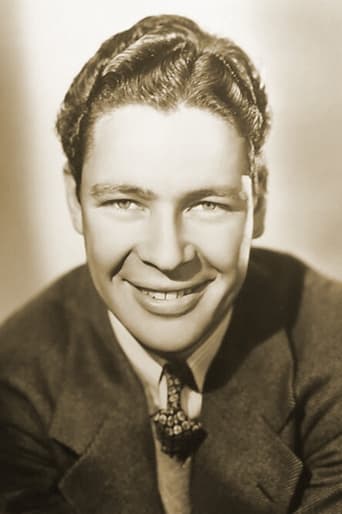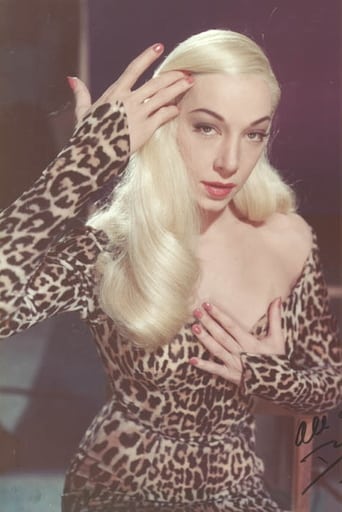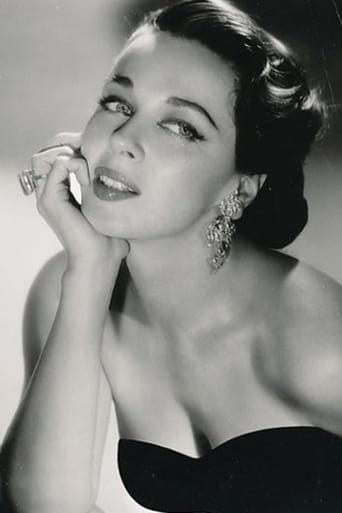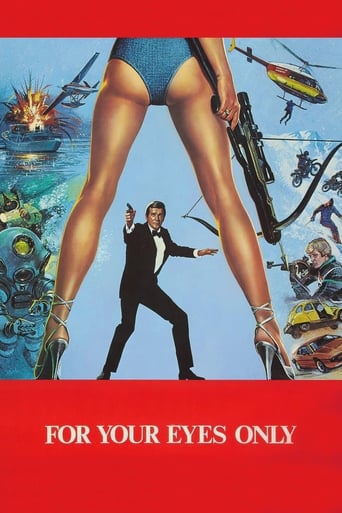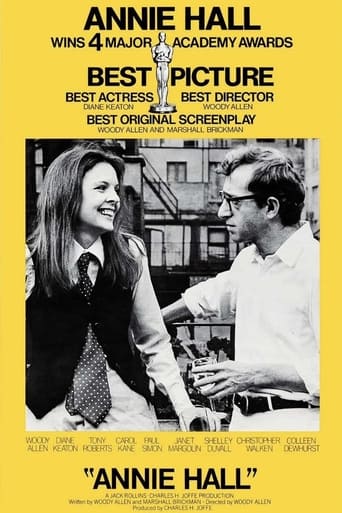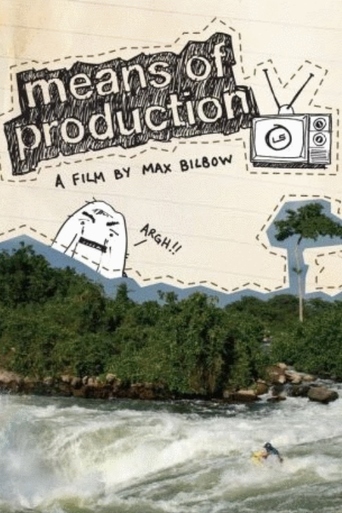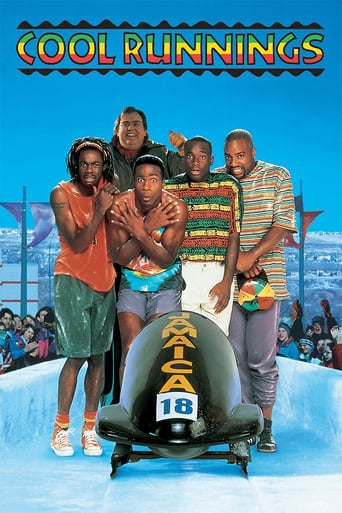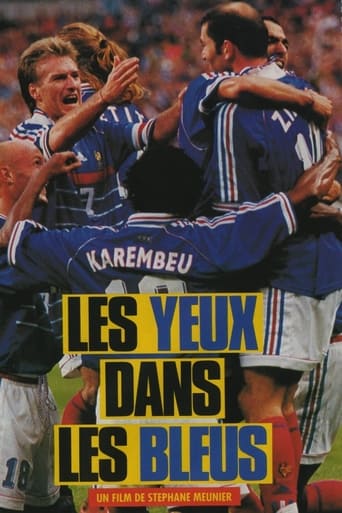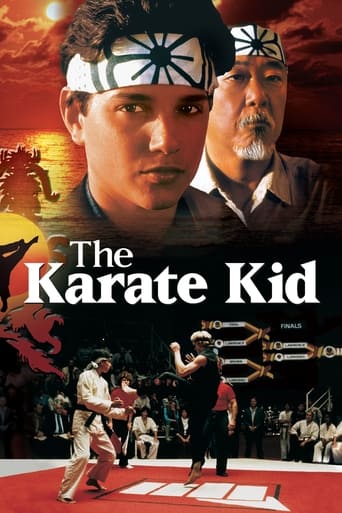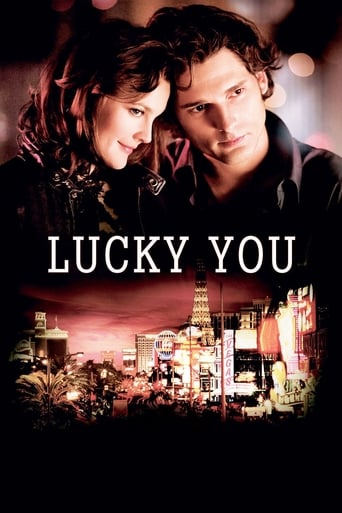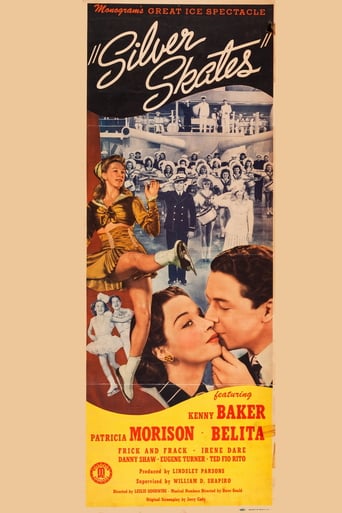
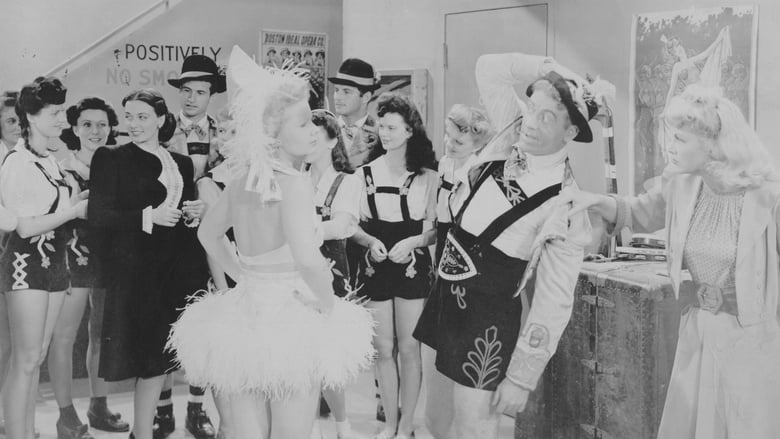
Silver Skates (1943)
The management of touring ice show faces mounting debts.
Watch Trailer
Cast


Similar titles
Reviews
SILVER SKATES (Monogram, 1943), directed by Leslie Goodwins, with entire production and supervision by Lindsay Parsons, is, by its label title, an ice skating musical, but not one starring the queen of the ice skating musicals herself, Sonja Henie. Of the films for which she appeared, Henie never had "skates" among her movie titles. Yet SILVER SKATES, which stars Kenny Baker and Patricia Morison, features Monogram's very own ice skating specialty, Belita, labeled in the opening credits as "star of the ice." While the Henie musicals produced by 20th Century-Fox centered around her mostly in plot and ice skating portions of the film, SILVER SKATES shares Belita with other specialties of the day as youngsters Irene Dare and Danny Shaw doing their own ice skating techniques, George Stuart, Eugene Turner and Jo Ann Dean playing themselves. There's also some time out antics by comedy team of Frick and Frack whose routines may have one think of the Ritz Brothers, but being no threat to that team nor any other comedy team for that matter as a result.The story, set in the Broadway district of New York City, finds Claire Thomas (Patricia Morison), producer of "Silver Skates Ice Revue," may go out of business after her star ice skating attraction, Belita (Belita) finishes her two week engagement to marry Tom (Henry Wadsworth), a Chicago businessman. Claire, who's loved by Danny Donovan (Kenny Baker), refuses to marry the singer in the show until she can clear herself of back debts. Thanks to Eddie (Frank Faylen), a stage hand, who, after receiving his two week notice, spreads a rumor that Belita secretly loves Danny, and because of that, feels that this would start of a romance that have Belita remain in the revue, thus keeping his job. During the complications which finds Danny engaged to two women at the same time, Claire encounters a little Dutch girl named Katrina (Irene Dare) in the lobby of her Broadmoor Arms apartment. It is learned that Katrina not only has gotten separated from Miss Martin (Ruth Lee) of the Netherlands Relief Commiittee, but turns out to be an orphan awaiting news about her Uncle Conrad Humperdinck, a former skater in Claire's shows. Learning Uncle Conrad has gone to serve in the Army, and her parents killed in an air raid, Claire assumes responsibility for the child with the intent on adopting her. Complications occur as Claire tries to induce Danny to marry her, only to learn about his "engagement" to Belita. Other members of the cast include the ever reliable Joyce Compton (Lucille, Eddie's girlfriend); Paul McVey (Roscoe Hayes, the booking agent); John Maxwell (Blake); Ruby Dandridge (The Maid); and Ted Fio Rito and his Orchestra.With the plot being as ordinary and secondary as forties musicals go, the song interludes, particularly the ice skating portions choreographed by Dave Gould, certainly highlight this production. With pleasing music and lyrics by David Oppenheim and Roy Ingraham, song numbers include: "Lovely Lady" (sung by Kenny Baker, skated by Belita); Dream sequence skating number with Irene Dare with Holland setting; "Cowboy Joe" (sung by chorus, skated by Danny Shaw); "Can't You Hear Me Calling From the Mountain?" (performed by Frick and Frack); "A Boy Like You, a Girl Like Me" (Sung by Kenny Baker and Patricia Morison); "Hollywood Victory Party" (skating sequence by Irene Dare and Danny Shaw); "Dancing on Top of the World" (sung by chorus, skated by Irene Dare); "Love is a Beautiful Song" (sung by Baker); and finale, "Sing a Song of the Sea" (Baker, Belita, chorus).With Monogram Pictures having a reputation of being second features of low-budget production value, SILVER SKATES comes as a surprise for anyone expecting very little. Though not quite 20th Century-Fox nor Metro-Goldwyn-Mayer, it is an interesting effort in Monogram's attempt on rising itself to better quality films. Though not quite Academy Award winning material, the film overall is an entertaining 73 minutes from its ten minute ice skating opening to grand scale final, with a little in-between amusements of amusing wisecracks and some hit and miss comedy. For anyone familiar with Patricia Morison, it's interesting finding her playing against her bad girl/ femme fatal type for decent, caring woman for a change. Her musical participation with Kenny Baker comes as a sheer reminder of the crooning style of Dick Powell and Ruby Keeler from his thirties musicals, yet something of a disappointment listening to Morison singing to an obviously dubbed vocalization. The star attraction, Belita, may not a good actress but somewhat forgivable in terms of being a newcomer to films who presents herself well enough as an agreeable new screen personality.Virtually forgotten by cast, title and reputation due to lack of television broadcasts since the 1950s or so, and never distributed to home video, SILVER SKATES was resurrected on cable TV's Turner Classic Movies in May of 1997 as part of its then monthly viewer's movie request. After that sole broadcast, it wasn't repeated again until many years later starting in October 2014. SILVER SKATES is definitely a "B" class musical regardless of its "A" production effort, but a worthy rediscovery as ice skating musicals go. (**1/2)
The tall, gorgeous ice skater Belita, who was also a wonderful ballerina, stars in this skateathon, "Silver Skates," that has a story here and there. Basically, an ice show owner (Patricia Morison) is desperate to save her show, which will fail badly once Belita leaves to get married. Help comes in the form of a pint-sized war orphan from Holland.It's really kind of an amateur hour, saved by the glorious Belita, the beautiful Patricia Morison, and Frank Faylen, whom I've always loved. Frick and Frack did comedy skating -- which in fact is incredibly difficult to do, but today one just feels like fast-forwarding through it. Some of the skating numbers were on the boring side.Gene Turner, a two-time national figure skating champion, was the other skating star. I took one look at him and said, "That's the man who doubled for Cary Grant in 'The Bishop's Wife.'" I was right - you can't see a film 100 times and not recognize the skating double. Turner toured with Sonja Henie, was a U.S. medal winner in single skating, pairs skating, and ice dancing, worked as a coach for 60 years, and also wrote a column for a skating magazine. He never competed in the Olympics because during his years of competition, the Olympics were subject to cancellation due to World War II, plus he was busy flying 60 missions over France.So much accomplishment. Monogram didn't deserve them. Not too much else to say, except that Belita should have been with MGM.
The sublime, the ridiculous and the annoying all get a run in this Monogram dazzler made as a mid war morale booster. BELITA, the Brit skate star who reigned as she skated at Monogram for 5 years was an absolutely gorgeous woman, and her appearances in the musicals like this one and LADY LETS DANCE are simply sensational. Also see SUSPENSE and THE GANGSTER both also made at Monogram for a feast and a fest. She is the best thing about this musical jumble; the worst is mannequin-man and whiny singer Kenny Baker... he is so wooden and his Dagwood looks have always left me cold... colder than the slabs Belita zooms across showing us her crotch. Repeatedly.... The annoying is the haphazard production which often seemed filmed in a corner of the studio.... odd short sets that are just a corner with a door, or big production numbers in a deep narrow set. This film has a truly terrible script and a lot of forced romance. Coupled with bad acting and a remote Pat Morison as the female lead actress, SILVER SKATES only works in the terrific musical skate production numbers... fortunately there are many. Though some are oddly dressed and choreographed... skaters arrive and leave in the background without performing, some wear too many clothes, others in groups wear similar ballgowns but are a razzle of colors and patterns, so it just looks like everyone grabbed anything they could and all rushed on to the ice in a mess of every costume hanging out the back... It actually looks like a suburban church production with costumes from a charity jumble sale. In one big number, compete with santasnow, wet bedsheets, a pine tree and cardboard igloos, we have a bevy of skating chorus girls, a fab kid skater, a penguin and an seal. The penguin wanders about all through two numbers and the viewers eye is constantly distracted from the skate show to see which direction the penguin has wandered off to. At one moment a rush of skating chorus girls just crashes straight into him... and the cameras keep rolling and the poor little thing just wobbles about between their legs. No wildlife wrangler at Monogram! There are two children who skate in this film and they are equally excellent. The big finale, which for no reason is a "battleship extravaganza" features squadrons of skaters in (hooray) matching outfits... but it is filmed from another suburb... the camera is so far away from the 'big set' for a lot of the 'big moments' that we are left wondering why there is 7000 acres of wet white ice in front of the show. The closeups of BELITA and her adagio, whizz-bye-s are excellent and as always she is sexy and sensational. It actually looks like a very cheap high school version of the massive Elanor Powell number from the finale of BORN TO DANCE. But this is a Monogram Picture and as such it is their 'biggie for'43'.... and should be enjoyed as such..... but try finding reason or cohesion in the array of dance numbers of what on earth type of show would manage an excuse for the order they come in or why they are presented. The actual fun in this musical is the mish mash of it all. Then you are truly ready for their SWING PARADE OF 1946 which has a crammed jammed and flung-at-you musical finale more in common with Cole Slaw than Cole Porter.
Figure-skating isn't the most promising basis for a film, nor for an acting career. Esther Williams's movie stardom was based on swimming, but at least MGM could just occasionally hang a decent plot line on that talent. Until somebody makes a movie about Tonya Harding, I don't think I'll ever see a genuinely exciting movie about figure-skating. (Don't let's mention 'Ice Follies of 1939', one of the worst movies ever made.)In American movies, the most famous skater was Sonja Henie, whilst England had Belita. Both women were blonde and attractive with it, especially in their short-skirted cozzies and high-topped skates. Apart from their skating techniques, the biggest difference between these two ladies on screen was their personalities. Henie always played a 'good girl' type: a frosted ice-virgin who didn't seem aware of her own nubile appeal. Belita, on the other hand, was sexy and she knew it. There's a big production number in 'Silver Skates' in which Belita does some spectacular ice-dancing, then she finishes by striking a proud pose at the centre of the rink and running her hands down the front of her own shapely torso while she throws her head backwards in rapture. This is clearly a lady who's very comfortable with her own body.I wish that 'Silver Skates' gave more screen time to the beauteous Belita and less time to its ridiculous soap-opera plot. During WW2, Hollywood made a lot of movies depicting America's homefront, in which the characters briefly pay lip-service to the war effort before immersing themselves in a plot line entirely unrelated to the war. 'Silver Skates' is one of those films. Hitler and Stalin are carving up Europe, but the characters in this movie are more concerned about staging an ice carnival. The presence in the States of the English-born Belita (given nearly no dialogue, alas) is attributed to wartime problems back home. Apart from this, the only wartime reference in this movie is a very brief appearance by a war refugee: a little Dutch girl named Katrina (played by a Yank child actress) whose residency in America has been sponsored by Claire (the ice-show's producer) because Katrina is such a good skater. I guess if she couldn't skate, she would still be back in Rotterdam fending off the Nazis. Claire is played by Patricia Morison, a Broadway actress (she starred in the original 'Kiss Me Kate') whose film career never took off.Apart from Belita's scenes, the most interesting things about 'Silver Skates' are a couple of brief skating turns by Frick and Frack, the comedy ice-skaters. The first time I ever heard of Frick and Frack was when Jackie Gleason did a comedy routine about a (fictitious) vaudeville act with that name, so I assumed that Frick and Frack were American vaudevillains. It turns out they were European, and they got a surprising amount of comedic mileage out of their ice-skating gimmick. Frick was tall and lanky with it, the moustached Frack was short and slightly-built. Their most impressive gag takes advantage of their disparate physiques: the two men skate directly towards each other, in trajectories so rapid that neither man can turn aside. A collision seems imminent. At the last instant, Frick spreads his feet and Frack ducks. Frack goes *between* Frick's legs, then both men straighten again. This is done so quickly that it very nearly looks as if they went right through each other! Frick and Frack perform this gag *twice* in 'Silver Skates', and they do it so skilfully that it's just as funny the second time as the first. (After Frack's death, his partner continued to perform as a single-act named Mister Frick.)Unfortunately, the skating routines (and Belita's good looks) are the only high points in this film. For most of its screen time, we get a banal soap-opera plot about people marrying one another for contrived reasons. Will the ice show go on, or not? (Take a wild guess.) Kenny Baker stinks up this movie with his presence. Kenny Baker was a 'singer' who appeared in several big-budget musicals of the '30s and '40s, but he's invariably the dullest performer on screen in each of his movies. In 'Silver Skates', Kenny Baker never sets foot on the ice rink, but I kept hoping the ice would crack open long enough for him to fall through and drown.'Silver Skates' would make a great ice-skating short if somebody would cut out all the argle-bargle subplots and just leave the skating routines by Belita, Frick and Frack and that little Dutch girl. As it stands, I'll rate this movie only 5 out of 10.


